Finally the media stopped talking about Maison Martin Margiela for H&M collection. The web has been flooded with articles and posts about the mysterious designer who is (should be) behind Maison Martin Margiela brand. Honestly I got bored of reading superficial and confused words about it, so I’ve decided to re-build the unique career of that talented Belgian boy named Martin Margiela, who became one of the most important designers of the last 25 years.
 |
| Martin Margiela – portrait 1997 |
As in the best stories about fashion designers, Martin Margiela’s peculiar talent bloomed during the training at the Royal Academy of Fine Arts in Antwerp (1977-1980). He had the chance to attend the Fashion department in the same years of the “Antwerp Six“, a group of designers (graduate between 1980 and 1981) that captured the attention of the international press breaking into the London Fashion Week in 1988. Actually Margiela is generally considered as the seventh symbolic member, despite he wasn’t physically part of the group set up by Walter Van Beirendonck, Ann Demeulemeester, Dries van Noten, Dirk Van Saene, Dirk Bikkembergs and Marina Yee. Their styles were similar and were inspired by the designer Rei Kawakubo (founder of the brand Comme des Garçons) which influenced the Japanese fashion of the 70s with asymmetric cuts and black and white collections.
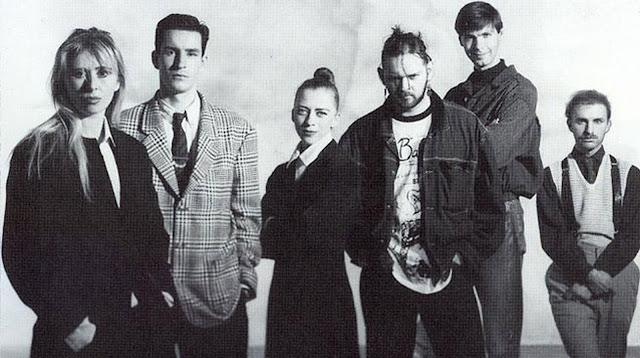 |
| The “Antwerp Six” group: (from left) Marina Yee, Dries van Noten, Ann Demeulemeester, Walter Van Beirendonck, Dirk Bikkembergs, Dirk Van Saene – London Fashion Week 1988 |
After working as freelance stylist and then as assistant of Jean Paul Gaultier (1985-87), Martin Margiela debuted in the summer of 1988 at the Café de la Gare in Paris with the first Maison Martin Margiela womenswear collection for Spring Summer 1989. He presented a show bordering with performing art, where models bathed in red paint paraded with covered faces on a white cotton catwalk. It was a shocking show, but the de-construction and re-construction of vintage items such as a butcher’s apron turned into evening gown, jackets made from an old tulle dress and the split toe Tabi boots with cylindrical heels inspired by the traditional Japanese socks, became early legends.
In the audience could not miss his mentor Jean Paul Gaultier.
The red paint stained cloth used as catwalk for the first show, was re-used six month later as fabric for the waistcoats of the Fall Winter 1989/1990 collection. The use of second-hand clothes and imperfect fabrics was a blatant act of rebellion against the widespread consumerism and consecrated Margiela as a conceptual designer, conflicting with the conformist fashion of the 80s, just as the hippies had done twenty years before, buying their dressed only at flea markets.
A/W 1989 – Explanatory sketch for an outfit and vest made from the red paint-stained cotton of the S/S 1989 catwalk – (Photo: mmm-maisonmartinmargiela)
Margiela was fascinated by the idea of giving a second life to vintage clothes remodeling them thanks to his tailoring skills. He felt quite offended when journalists called him “de-constructive“, because his fashion didn’t have a destructive or negative value, rather it was linked to the concept of rebirth. He liked challenging the dresses’ wearability by playing with the proportions; showing inner linings and frayed hems; or using the inner side of the fabric on the outside of the garments. His personal way of making fashion was ahead of the time and soon all the eyes were on his collections and sartorial details, which later were re-proposed by other designers, turning them into commercial fashion trends.
S/S 1990 – Children at schools near the Maison were enlisted to create the invitations. (Photo: mmm-maisonmartinmargiela) S/S 1990 – A 200% enlarged tank top, crushed under a skintight invisible net t-shirt, becoming a long draped dress.
The Spring Summer 1992 show in Saint-Martin metro station. The station had been out of use since 1939. 1600 candles illuminated the tree main stairwells.
S/S 1992 – Textile motifs
were painted onto the women’s skin. Colors were applied on the women’s fingertips. Each woman had a rhinestone at the inner corner of each eye. (Photo: Ronald Stoops – mmm-maisonmartinmargiela) 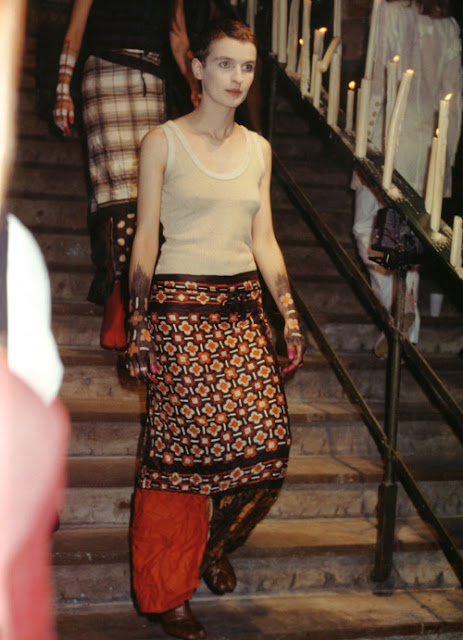
S/S 1992 – Garments were made from vintage square scarves.S/S 1994 – “Retrospective collection”: Iconic looks from 1989 to 1993 showed again in an ex-supermarket with a production of hand-painted jeans from the artisanal line. On models’ necks were painted the names of the season they wore. (Photo: Anders Edström, Tatsuya Kitayama – mmm-maisonmartinmargiela) A/W 1994 – The collections were shown simultaneously in six cities (Paris, London, New York, Tokyo, Milan, and Bonn) when they were delivered to the stores, replacing the traditional Paris fashion show.
(Photo: Nick Tupin – mmm-maisonmartinmargiela, Marina Faust – cotonblanc) A/W 1994 – Elements of a doll’s wardrobe were enlarged 5.2 times to human scale. Disproportionate aspects of the doll’s pieces were retained in the up-scaled outfits, for example in the buttons and zips. (Photo: Anders Edström – cotonblanc, mmm-maisonmartinmargiela) A/W 1995 – Shown in a circus tent in the Bois de Boulogne in Paris. Model faces were covered with a black muslin veil. During the finale, the women removed their veils and carried fuchsia balloons. (Photo: Marina Faust, Ronald
Stoops – mmm-maisonmartinmargiela) S/S 1996 – Photographs of garments were printed on light and fluid fabrics. Then made up into garments of very simple construction. Topless black Tabi sandals were worn with shipping tape repeatedly wrapped around the sole and foot.
A/W 1996 – A brown mask was painted on the upper part of the women’s faces as well as their teeth were painted a shiny white.
S/S 1997 – An unfinished fabric transformed into a dress with an irregular hemline. (Photo: Ronald Stoops – mmm-maisonmartinmargiela) In the mid of the 90s a particular trend hits the top of the most important European fashion houses: it’s time to change the creative directors focusing on new talented designers. In those years, unthinkable matches bring fresh air in the dusty fashion system: Tom Ford changes the concept of luxury at Gucci, making it a sexy and bold; Marc Jacobs begins the long liaison with Louis Vuitton; the hooligan of fashion Alexander McQueen upsets Givenchy poetics; the bizarre and excessive John Galliano is the new interpreter of Christian Dior and finally Martin Margiela from Autumn-Winter 1998/99 until 2003 becomes the new Hermès creative director. This last particular pair, initially ridiculed by the press, gives Margiela a chance to deal with the long tradition of craftsmanship of the French house, experiencing the construction of garments with minimalistic shapes, playing with the lightness of the best high quality materials.
Hermès by Martin Margiela – A/W 1998 – A/W 2002 – A/W 2003 – S/S 2003
The new position as creative director at Hermès doesn’t prevent him from carrying out the evolution of MMM: after ten years devoted to the womenswear, Martin Margiela launches the male line in 1998 with the Spring Summer 1999 collection.
S/S 1999 – Debut of the first men’s collection: Oversize G.I.Joe tag; Vintage shoes painted; Dark suit
The niche success reached in the 90s by the brand Maison Martin Margiela is a testimony of how luxury customers were not all slaves to the logos or to the celebrity fashion designers. In fact, from the very beginning, Margiela marketing strategy was based on the cult of “impersonality” (the lack of a designer to cheer) and invisibility, so that the only portraits of Martin Margiela are the few photos taken during stolen moments in the backstage of the fashion shows. This philosophy was in sharp contrast with the world of appearance and, thanks to a sort of ironic and pungent snobbery, it ennobled fashion to the level of art, freeing it from the laws of mass market. Just think that MMM boutiques aren’t registered in the telephone directories and don’t have signs. The staff uniforms in the shops and in the offices are white lab coat; all the shops are characterized by white color, as well as the packaging is anonymous and without logo.
Similar devices characterize even the fashion shows: models often have covered face or eyes; the locations are dirty, decaying or abandoned places, in stark contrast to the usual luxury places; there’s no hierarchies for the seats, following the first-come, first-served rule; the interviews are exclusively released by fax using the first plural person to emphasize the sense of collaboration, not focusing on the individual designer, but on the whole Maison Martin Margiela team.
A/W 1999 – Video presentation.
Feather duvets covered with vintage bed linen were worn as coats, waistcoats or wraps. The covers were also meant to be worn as dresses without the duvet inside. Funny details: knee-high wool socks were worn over shoes.
S/S 2000 – fitting picture; Chloë Sevigny on Purple Magazine wearing men’s oversized garments
A/W 2000 – Oversized collection. Garments were molded to an Italian size 78 dress form.
A/W 2001 – Women’s show. The cellar of the Alexander III bridge was arranged in a series of little squares with beaded curtains. Model and assistant running in the “backstage”. (Photo: cotonblanc) S/S 2002 – White leather jacket with plain applique logos
A/W 2002 – Vintage jeans reworked into classic trousers. The belt and front pockets were transformed, the back pockets removed and classic pockets with flaps were constructed. ( Photo: Jacques Habbah – mmm-maisonmartinmargiela)
In 2002 the entrepreneur Renzo Rosso, owner of Diesel brand, buys MMM bringing a series of changes for the label. Despite the collections go on season by season, rumor has it that there is no longer Martin Margiela at the helm of the brand because of the dissenting views on marketing strategies introduced by the new owner.
S/S 2003 – Mask make up; Silver film applied to a vintage slip
A/W 2003 – The models were illuminated by two men bearing panels of six strip-lights.
A/W 2004 – Men’s presentation
S/S 2005 – Since 2003 were introduced garments named ‘Replica’, reproductions of archetypal second-hand garments from different style periods. This is the Reproduction of a doctor’s coat from the 1920s. Provenance: France. (Photo: Marina Faust – mmm-maisonmartinmargiela) A/W 2005 – Trench evoking the look of someone sheltering from the rain underneath the coat, collar endings at tip of the head. The neck and shoulder lines were elongated so the coat could be worn as a hood. When not worn up, the coat’s collar envelops the shoulders.
A/W 2005 – item from the Artisanal Production, the reworking of men’s and women’s vintage garments, fabrics and accessories. Three vintage wedding dresses were assembled and sewn onto a brassiere, creating a unique ball gown made of different fabrics.
S/S 2006 – Maison Martin Margiela “Artisanal” Exhibition at Galleria Carla Sozzani-Corso Como 10, Milan. Waistcoat made of playing cards which were shuffled and aged by dyeing, fraying, and ironing, then in nappa leather. (Photo: Marina Faust – mmm-maisonmartinmargiela) A/W 2006 – Maison Martin Margiela was the special guest at Pitti Uomo 69 with a presentation at Teatro Puccini in Florence.
S/S 2008 – In-store sales display for the “Incognito” sunglasses. The design for the eyewear was inspired by the appearance of the models in the maison’s lookbooks, where a figure’s identity is rendered anonymous through a black pen stroke across the eyes.
In a few years the rumours become more and more insistent, until an insider of the company said that since 2007 Martin Margiela had delegated the design of the lines to the various creative teams, following only a few special projects such as the creation of the perfume and the collection for the 20th anniversary. The secret was officially revealed in October 2009 when Renzo Rosso himself confirmed that “Martin has not been there for a long time” and that there is no intention to replace him, focusing on a new young creative team.
S/S 2009 – Disco-mirror tuxedo jacket
A/W 2009, S/S 2010, A/W 2010, S/S 2011, A/W 2011, S/S 2012 – style.com
S/S 2010, S/S 2011, A/W 2012, S/S 2013 – style.com
It has been a silent exit from the scene, just as his entrance, but we could not expect more from an invisible fashion designer. Currently, the sensitivity of the label is changed, the collections are focused on the surprise effect of the details, turning the archive garments into something more wearable and trendy. There’s a new commercial approach and the last collaboration with H&M (November 2012) is the proof.
Alessandro Masetti
The Fashion Commentator
Photo and web references:
style.com/ mmm-maisonmartinmargiela/ cotonblanc/ fashionencyclopedia.com/ independent.co.uk/ guardian.co.uk/ nationalpost.com/ jcreprot.com/ hypebeast.com/ amagazinecuratedby.com/ contemporaryfashion.net/ honeyee.com/ nytimes.com/ businessoffashion.com Maison Martin Margiela for H&M collection (Nov 2012)




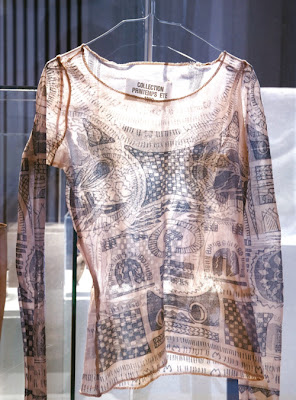
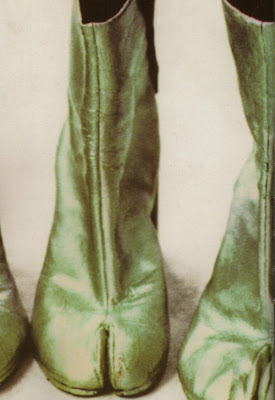

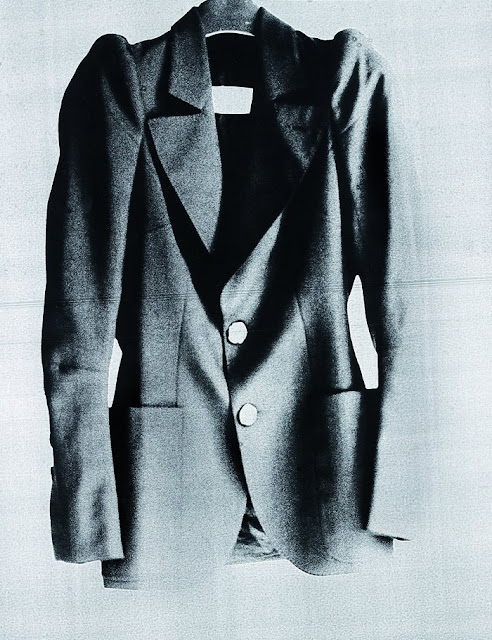
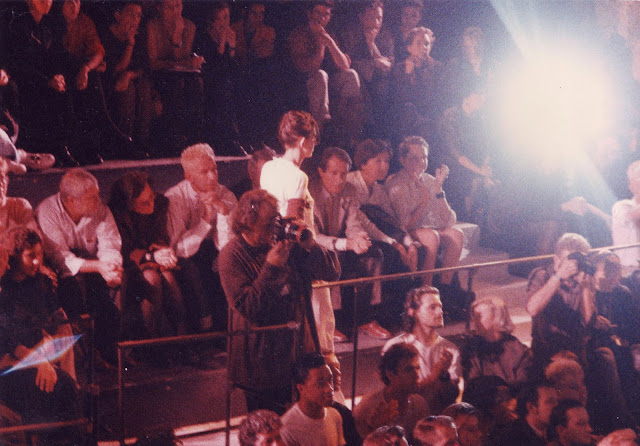
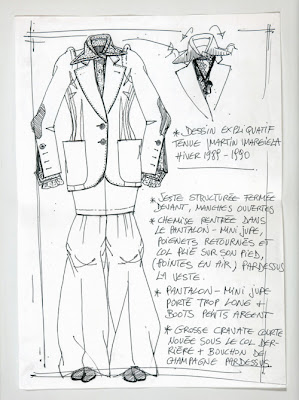
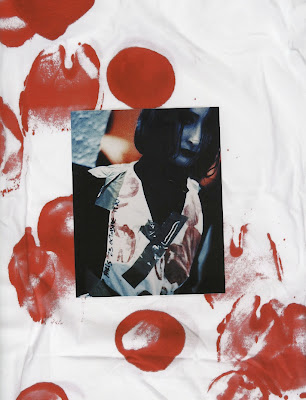



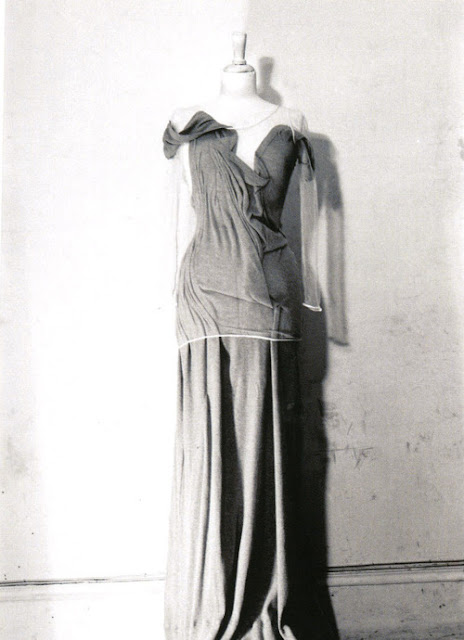
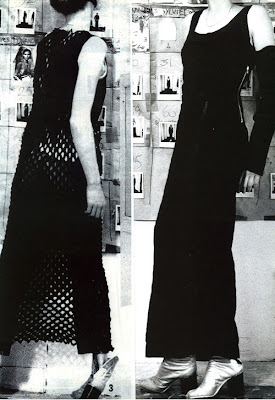
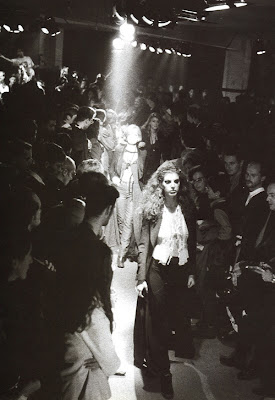

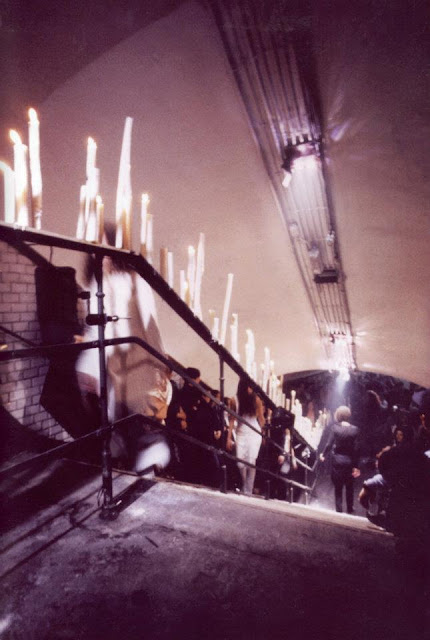
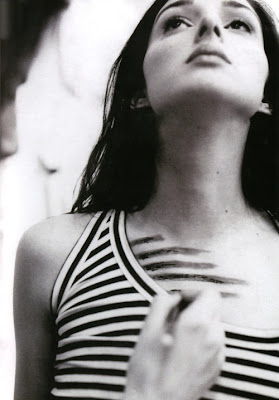


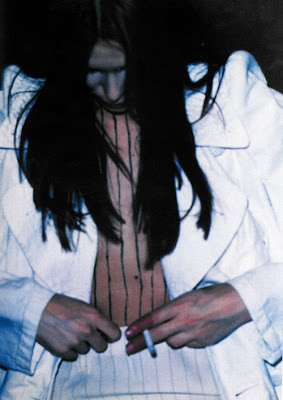

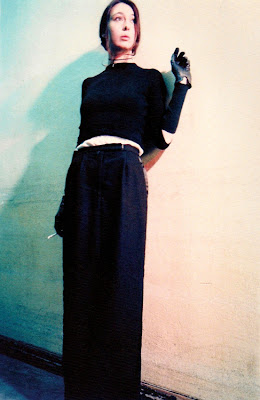

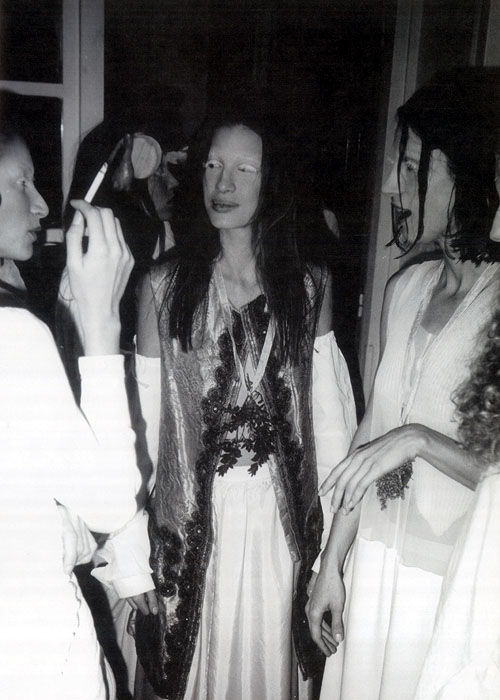

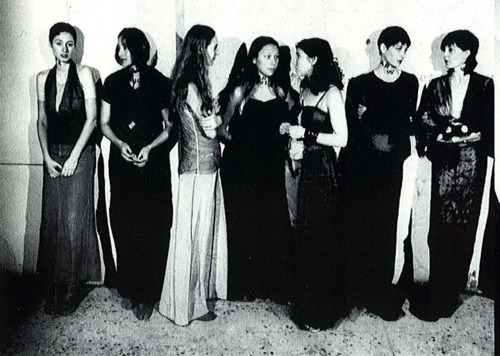
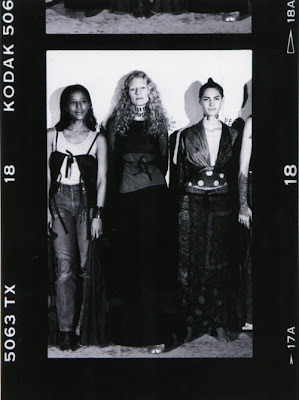
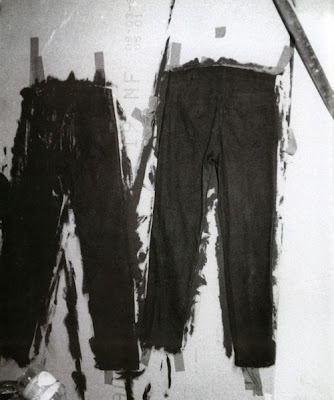

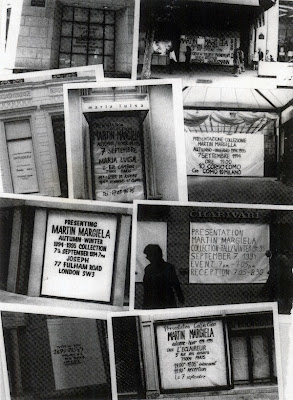
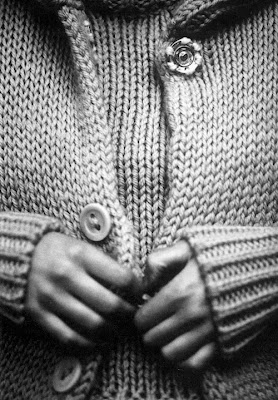
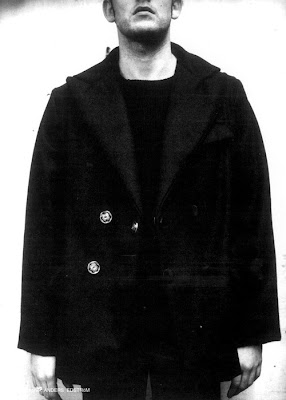
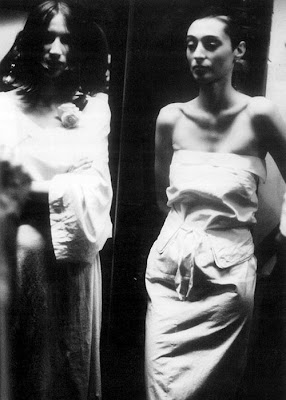
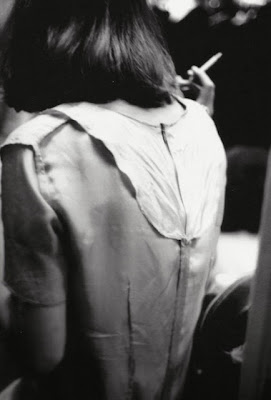





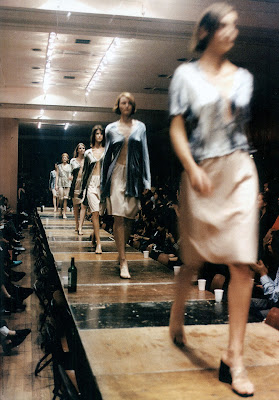


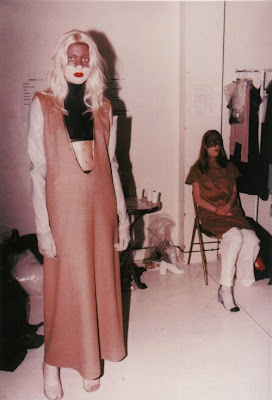
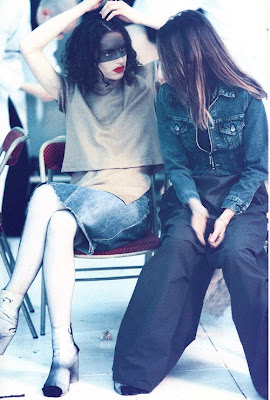

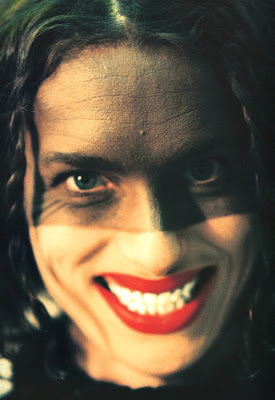

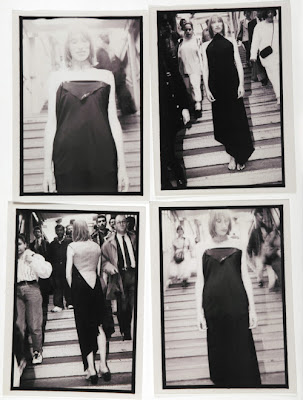


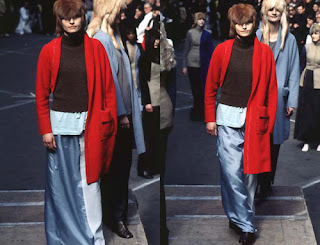
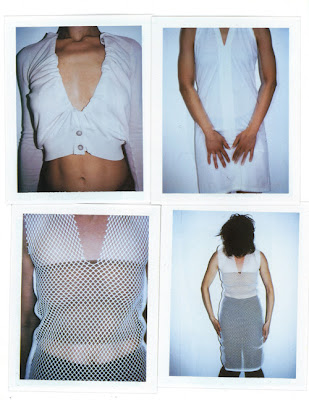
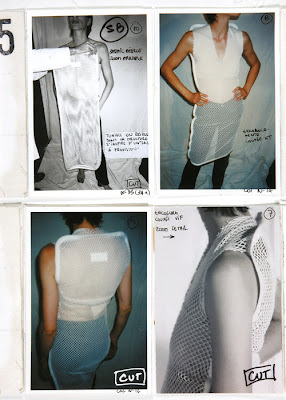

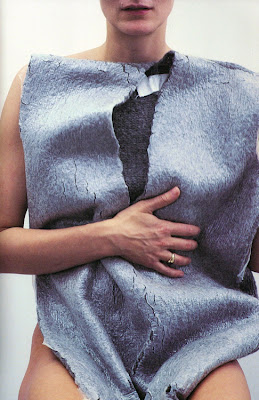
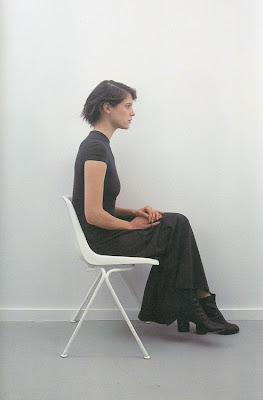

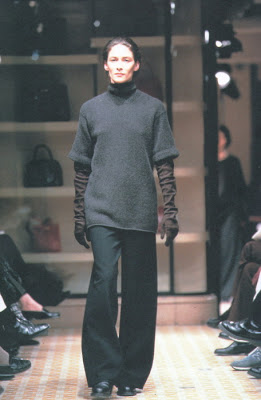








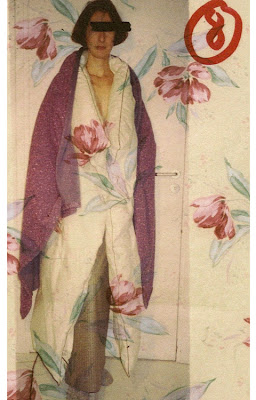
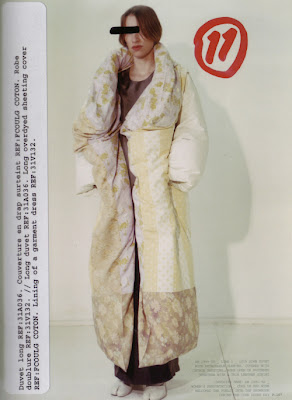
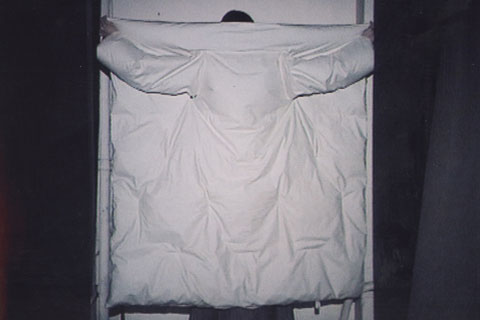
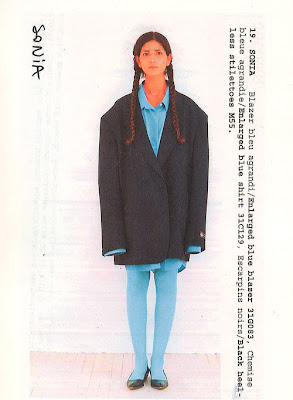
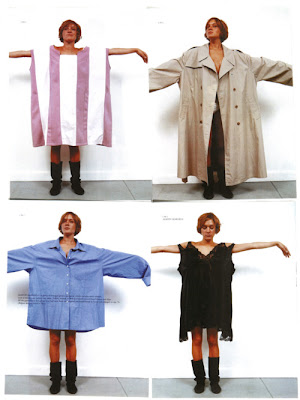


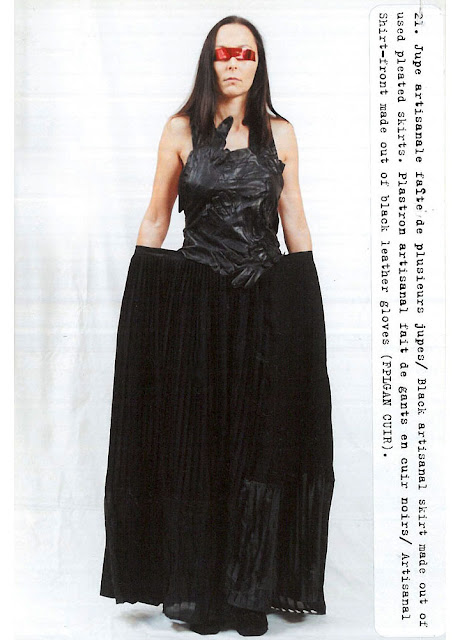

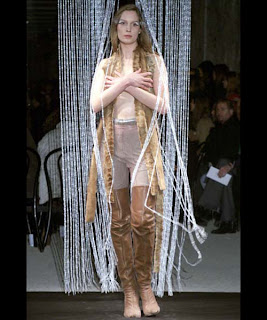




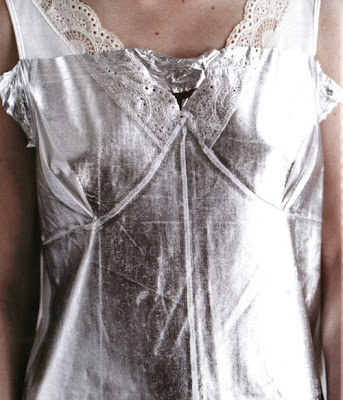


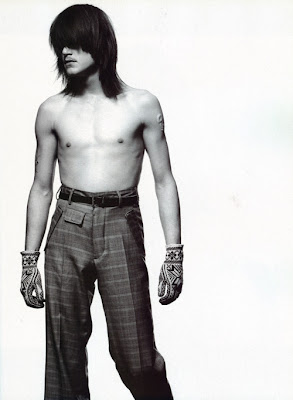

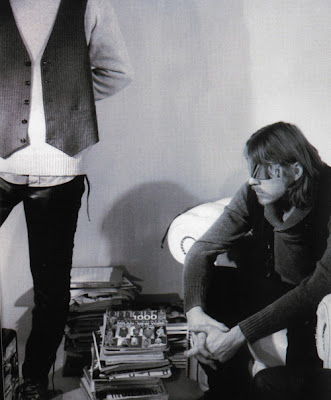




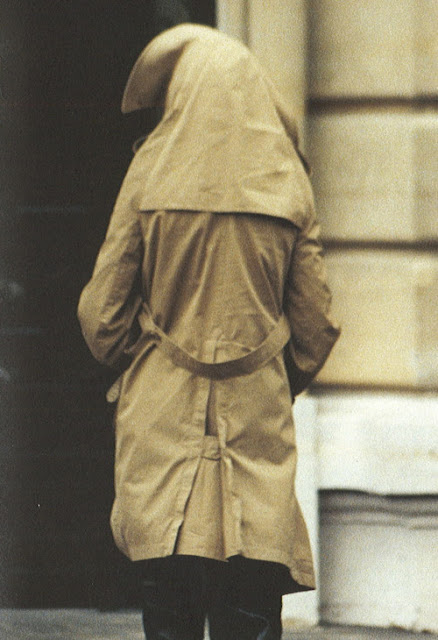



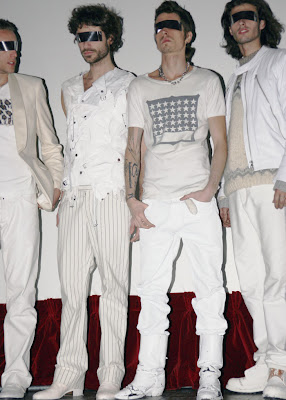
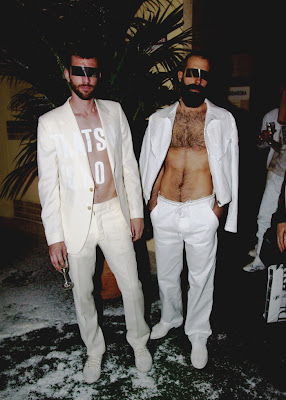

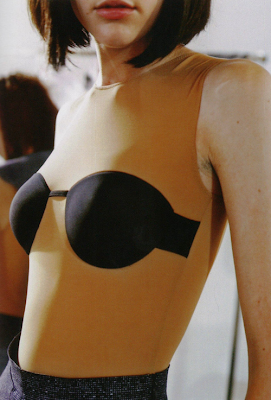
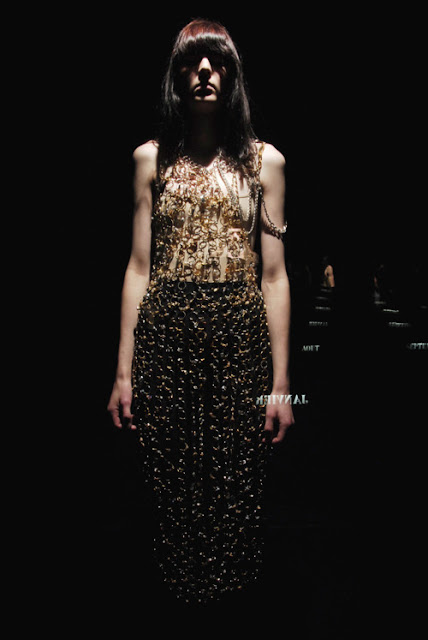
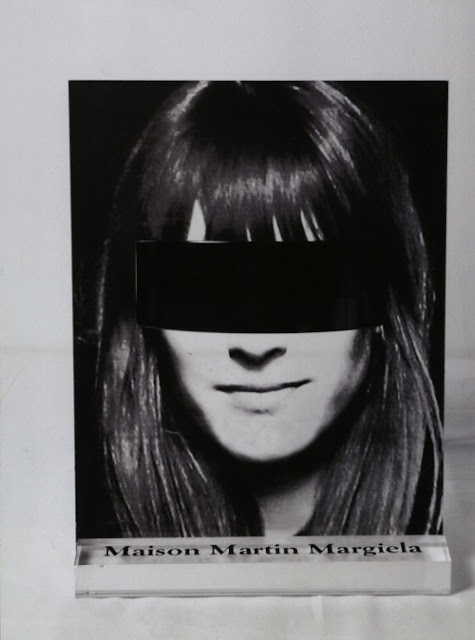
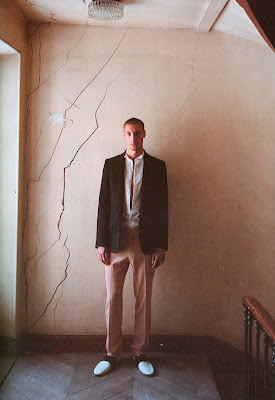
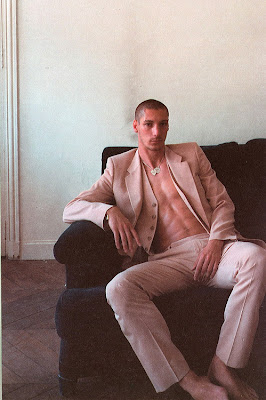
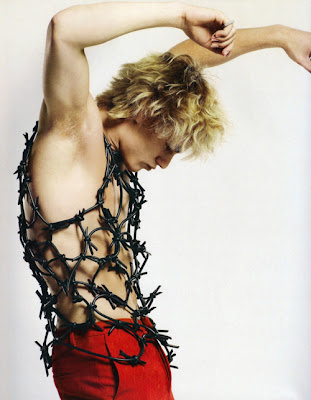
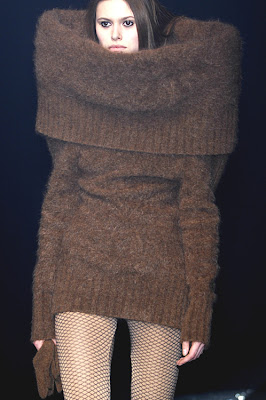
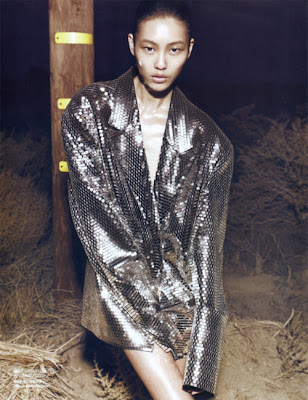











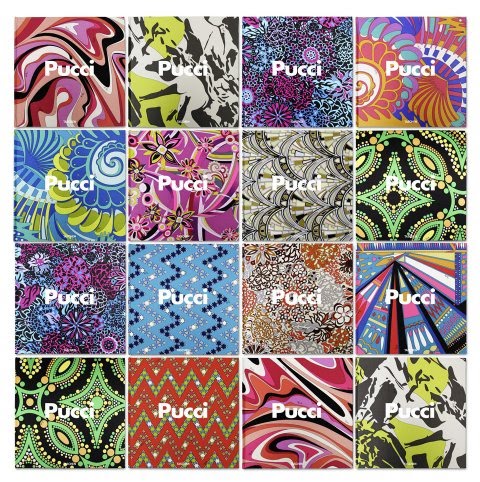
Wow you really put a lot of effort into it!
Great job!
fashionistainthedark.blogspot.com
Thank you so much Eva!
LOVE this post! I was in the preview Maison Martin Margiera with H&M in Madrid
http://trendmustache.blogspot.com.es/2012/11/maison-martin-margiela-para-h-preventa.html
xx
Cool…I hope you’ve bought something from the real MM period! 🙂
Such a great piece of article, you should be proud, well written 🙂
Check out my blog if you want : http://www.stradivariusisters.blogspot.com
Thank you so much! See you in your blog! 😉
Non so se mi sembra un pazzo o un genio, forse tutti e due…non conoscevo il background così a fondo…grazie per le tue delucidazioni sempre all’altezza.
In effetti hai ragione che una collaborazione con H&M è una politica di marketing veramente in contrasto con le sue “idee primordiali”…
http://7-sevendays.blogspot.it/
Purtroppo sì, ma c’è anche da dire che i tempi cambiano e la crisi non ti permette di fare lo snob. Ma c’è sempre una via di mezzo!
ciao,
pretendo che Martin Margiela ti ringrazi pubblicamente per questo post così colto e raffinato.
ave
Ciao Ave!!! ahahah non miro a così tanto. Spero solo di averlo omaggiato degnamente!
Bravissimo Ale, hai scritto un post eccezionale, raccontando a chi non lo conosceva – con il tuo solito stile e competenza – la storia di un Brand davvero unico…ti abbraccio!
http://www.rockandfrock.com
Ciao Vale! So che hai apprezzato questo post proprio perché sei una fan sfegatata del brand! 😉
E meno male che Alessandro c’é!!! Applausi per questo pezzo.
Grazie per questo bellissimo omaggio ad un grande stilista che amo moltissimo, naturalmente ho letto tutto il pezzo con avidita’ e interesse particolare, e mentre leggevo la mia stima nei confronti di questo grande cresceva sempre di piu’!
Amo le sue linee ben definite, i colori che usa , e la raffinatezza, sobrieta’ e unicita’ mi hanno sempre portata a prediligerlo nei miei acquisti.
p.s. ti ho risposto sul blog
maria elena
http://www.tuttepazzeperibijoux.com
Ciao Maria Elena, con il coretto iniziale spero non volessi paragonarmi a Silvio! 😉 ahahah
Grazie mille per aver apprezzato il post! 😉
Meraviglioso questo post.
Mette in evidenza tutti gli aspetti della “poetica” di Margiela, è scritto in maniera impeccabile come sempre ed è corredato da una serie di immagini davvero incredibile. Ti sei sparato una ricerca pazzesca. Bravissimo!!!! Da leggere e rileggere 100 volte.
Ci hai veramente dato una lezione a tutte.
Non per discolparmi, ma ci provo a resistere alle collaborazioni di H&M solo che alla fine ci casco sempre. Prometto però che questa è l’ultima volta.
Sai com’è prevale sempre l’illusione di possedere qualcosa che si avvicina a quello che vorresti e che probabilmente non potrai avere mai. Ma appunto è solo un’illusione
Per quanto un abito Margiela – seppur sospetto successivo all’inserimento di Renzo Rosso – ce l’ho anche.
Adesso mi ritrovo con l’abito nero orizzontale e non riesco a vedermici; in realtà si tratta di un ripiego perché avrei voluto la giacca con le spalle a punta, la collana e le scarpe con la zeppa di plexiglass (escluse causa prezzo). Non so, forse lo cambierò – se riesco – col maxipull, però dopo aver letto il tuo post mi sento un po’ stupida 🙁
Ale stai tranquilla, respira e indossalo almeno altre 5 volte, poi inizia ad abbinarlo con gli accessori più semplici che trovi e vedrai che ti sembrerà un capolavoro. Io cedo spesso e volentieri alle collaborazioni con H&M, ma essendo cosciente del fatto che si tratta comunque di H&M e non del marchio vero e proprio. E’ solo un modo per portare un po’ di brio nel guardaroba e renderlo fuori dall’ordinario. Questa collezione non l’ho apprezzata per un solo semplicissimo motivo…i prezzi…decisamente troppo troppo troppo alti! Confido nei saldi per accaparrarmi i giacconi e se ho un colpo di testa, anche la pelliccia! ahaha 😉
Cavolo che ricercona, complimenti! E’ sempre bello vedere che qualcuno “si sbatte” per dare informazioni e non solo banalissime foto. 🙂
Ciao Lucia, grazie. Prediligo la ricerca e la critica, alla solita notizia da comunicato stampa che si rigirano già tutti quanti i magazine. Grazie per aver apprezzato!
complimenti per questo docu-post!!!interessantissimo,ricco di immagini e dettagli!! buona domenica!
Ciao Sabry! Grazie mille, sono contento abbia apprezzato!
complimenti per il post! hai inserito tantissime foto che sono molto belle!
Grazie! 😉
Questo post è bellissimo Ale!
Leggere i tuoi post è come sfogliare un’enciclopedia della moda..e io l’adoro!!!
Grazie per il lavoro che svolgi, è davvero importante e interessante!!!
XOXO
Cami
http://www.paillettesandchampagne.com
Cami, grazie per esserti fermata ad apprezzarlo e adorarlo! 😉 A presto!!!
Fantastico, dettagliatissimo, da te imparo sempre molto, cura encomiabile. E… grazie per il commento. Baci.
Ubique Chic, H2O Fashion added
Ciao Eva! Grazie mille per essere passata e per ciò che hai scritto! Sai benissimo che adoro i tuoi post, insoliti, divertenti e mai banali.
A presto!!!
Ale, che te lo dico a fa’? Come te ce ne sono davvero pochi, non mi sono neanche sognata di fare un post sulla collaborazione tra hem e margiela, l’avrei banalizzato… bravissimo tu che hai fatto questa ricerca, di cui approfittero’ centinaia di volte, un saluto
ile
Ciao Ile! ahahah grazie mille. E’ stato un duro e lungo lavoro, ma per soddisfazione personale, ne è valsa la pena. 😉
Ciao Ale, mi ci è voluta mezz’ora per leggere tutto, ma alla fine ce l’ho fatta! Io, come Ilenia, ho evitato di scrivere. Oltre i gusti personali c’è dell’altro e sicuramente avrei anche io banalizzato il tutto. Sei grande, Ale!
ps. conoscendoti, mi è preso un colpo infatti ho visto che mi avevi lasciato un commento. Mi aspettavo qualcosa del tipo “ma la finisci di postare queste robacce diabetiche?!” ahahah invece no, mi hai stupito!
Un bacione!
Ciao Nunzia! Grazie mille. Hai fatto meglio a non scrive un post comunicato, soprattutto se non apprezzi o non conosci il designer. Ho voluto scrivere un post del genere proprio per “fargli giustizia”. 😉
Che bella ricostruzione. Complimenti! Hai reso giustizia ad un designer secondo me svilito dalla parla – parla degli ultimi tempi.
Grazie mille Madame! 😉
Mi fa proprio piacere leggere su un blog un articolo di moda così documentato e completo, complimenti! Io non riesco mai a resistere alle collezioni di H&M, ne scrivo spesso ma in questo caso mi sono limitata a dare la notizia presentando le foto della collezione e cercando di trasmettere la singolarità della marca che realmente non so quanto sia stata capita dato che sono andata proprio venerdì da H&M ed era rimasto tutto!
xoxo
http://blog.dorafashionspace.com
Ciao Dora! Grazie mille per l’apprezzamento e purtroppo la tua constatazione è più che vera. Ti posso confermare che anche a Firenze (almeno la collezione uomo) è rimasta intatta! La causa è molto semplice…i prezzi altissimi!
A presto! ;)))
Il titolo dice già tutto.
Posso solo aggiungere che è il mio preferito e che hai fatto un post magnifico!
Ciao Andrea! Grazie mille per il tuo continuo supporto! ;)))
Come al solito una ricostruzione degna da manuale. Sei sempre impeccabile nel fare ricerca, abbinare immagini significative e dare la tua opinione senza costringere troppo il lettore a darti ragione o meno.
Sulla carriera di Margiela avevo avuto qualche perla da Linda Loppa, che come ben saprai ha promosso i fenomenali sei di Anversa e che credo sia una delle più grandi sostenitrici di Margiela da sempre.
Mi piacerebbe conoscere la sua opinione in merito alla decisione di collaborare con H&M.
Detto ciò, da quello che ho potuto vedere, finora è stata una delle collezioni più rispettate dal colosso low cost (e forse è per questo che c’era veramente poca gente e, a differenza della collezione di ADR, è rimasta tuttora non compresa).
baci G
Vuoi rimanere aggiornata/o sui miei post?
Segui In Moda Veritas
IMV su Facebook
IMV su Bloglovin’
Ciao Greta! La documentazione sulla Loppa mi ha fatto dannare non poco, perché il suo ingresso come direttrice dell’istituto pare sia successivo al diploma di Margiela, ma di sicuro lo ha sostenuto successivamente, così come ha fatto con gli Antwerp Six. Loro sono andati a Londra su un camper, Martin invece ha deciso di debuttare a Parigi. Due scelte diverse, ma che hanno dato a pieno i loro frutti!!! 😉
Caro Alessandro,
Da tanto tempo che non ho letto un blog post cosi lungo e con tanta piacere. Ti faccio i miei complimenti.
Da oggi ti seguo (gfc) con tanta curiosità.
Nicoleta
http://www.nicoleta.me
Ciao Nicoleta! Grazie mille per i complimenti, ci becchiamo al prossimo commento. Ora passo subito da te! ;)))
che belli questi post!
sei veramente bravo ma lo sai già!
amo le foto di archivio e questo genere di post che mi trasmettono davvero tanto!
comunque per MMM devo ammettere…che non è il mio stile, non mi piace molto..! forse sono l’unico a non averne parlato sul blog credo xD
grazie a dio il blog è libero e democratico ahahahahha
un bacio
Syriously in Fashion
Official Facebook Page
Join my CARRERA giveaway
Amazing review! LOVE this post 😀 One of the covers of my 3rd issue of ODDA is with Margiela 🙂
xx
http://www.sickbytrend.com
discutibile, inquietante, ma geniale
come sempre hai il potere di mettere i puntini sulle i.
bravo!
http://nonsidicepiacere.blogspot.it/
BRAVISSIMO
thank you !